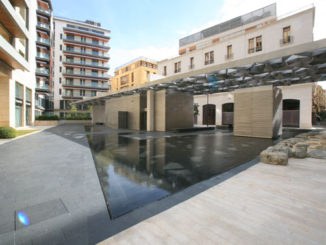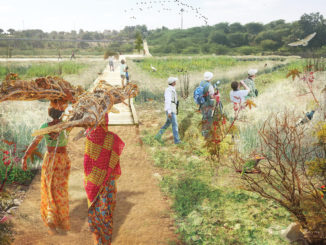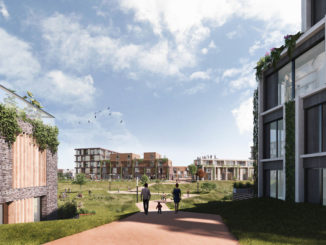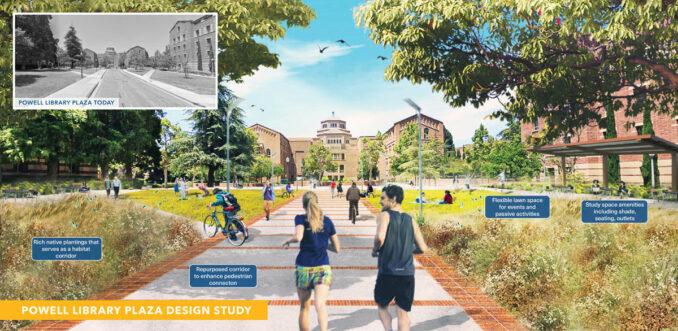
California, like all the West, faces mounting pressures to reduce water use. Campuses are hubs for innovation that can lead revolutionary climate initiatives and catalyze cultural shifts through the manifestation of their built environments. The UCLA Landscape Plan delivers a 30-year vision with measurable outcomes, targeting 31.4 million gallons of irrigation water saving annually and an overall 65% reduction in turf areas. Informed by historic ecology and traditional ecological knowledge, the Plan envisions an integrated landscape framework, encompassing three transformative ideas: landscape zones, environmental systems, and design and programming. It charts the course for UCLA to become a model for the next generation of campuses.
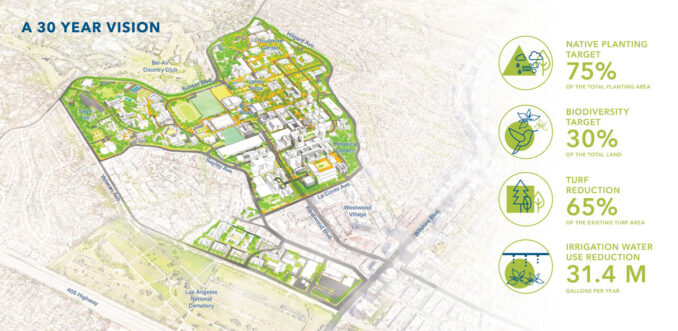
The Evolution of UCLA and Future Resilient Campus
Facing severe drought, campuses in California need to shrink their water use. UCLA endeavors to be a leader in the transformation of university campuses toward resiliency. Constraint by its physical footprint, this prestigious campus strains to accommodate an increasing student population. UCLA must reimagine its iconic campus landscape to meet evolving demographics needs while honoring historic landscape and indigenous culture.
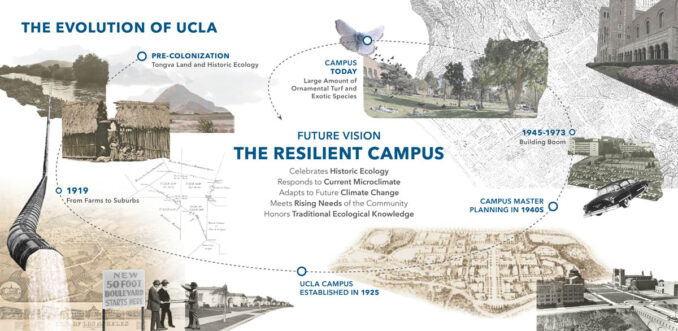
Years of ecological and cultural influences shaped the campus and created classical landscapes representing a park-like setting. Currently, 29% of campus land is largely occupied by water-demanding turf and exotic species. The Plan delivers a 30-year vision transitioning UCLA toward a resilient future. It targets 31.4 million gallons of irrigation water saving annually and an overall 65% reduction in turf areas.
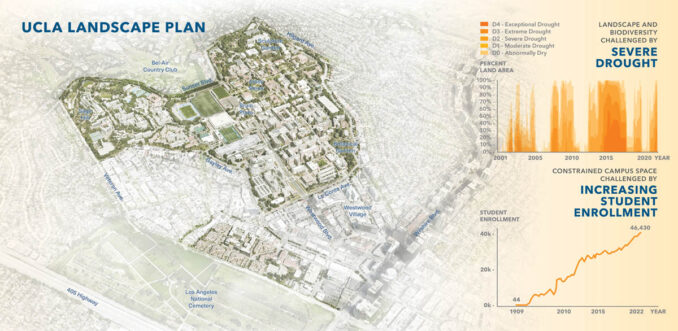
Traditional Ecological Knowledge
Sitting on the ancestral homeland of the Gabrieleno/Tongva people, UCLA collaborated with the Tribal partners to integrate traditional ecological knowledge into the Landscape Plan. Featured strategies include identifying spaces on campus for indigenous land stewardship and placing interpretive signage for Tongva plants.
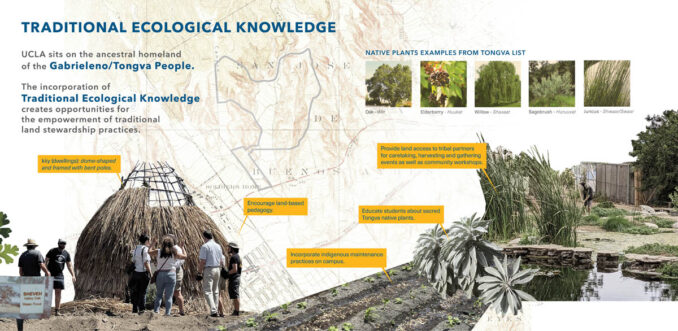
Process and Engagement
Engagement called upon a rich body of stakeholders to consider the campus’s role as a living laboratory. Contributors to the Plan include student groups, ecological, horticultural and watershed consultants; researchers and faculty; indigenous partners; as well as campus communities at large. The Plan contends that a landscape represented by drought-tolerant native ecology can also be one that is instrumental for learning, research, and teaching; and that is conducive to sociability, equity and diversity.
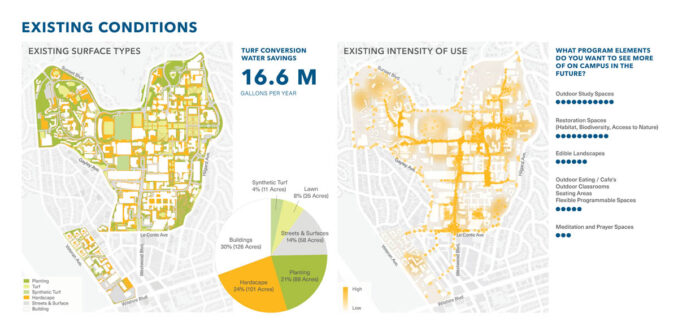
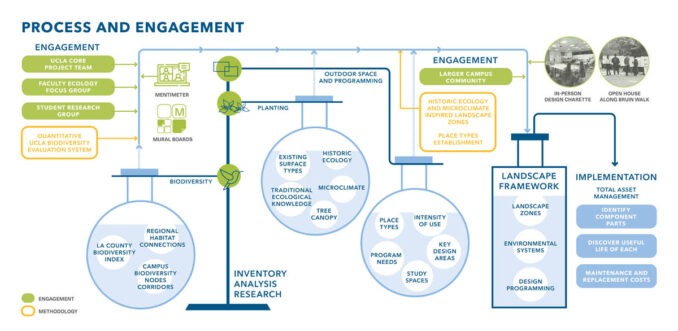
Landscape Framework
Historic ecology provides a useful guide for future ecosystem services and biodiversity enhancements. Along with data-driven analyses of the existing natural, built, and cultural features, the Plan envisions a landscape framework encompassing three transformative ideas: landscape zones, environmental systems, and design and programming.
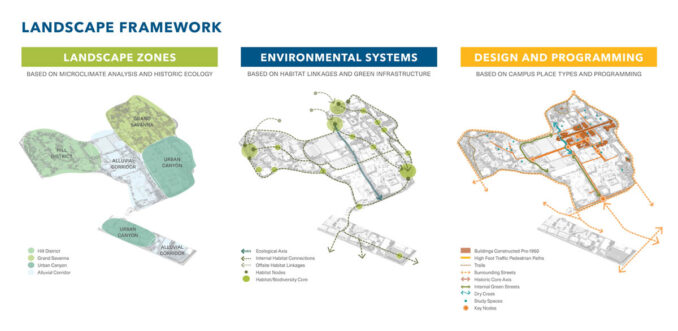
Landscape Zones: The Plan identifies four landscape zones, including Grand Savanna, Alluvial Corridor, Urban Canyon, and Hill District. The delineation of zones is defined through the analyses of historic ecology, contemporary microclimates, and native plant communities.
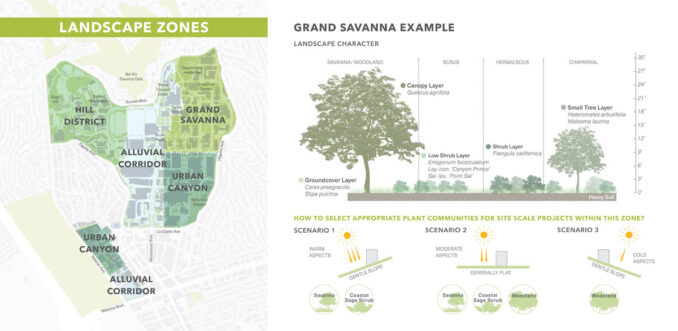
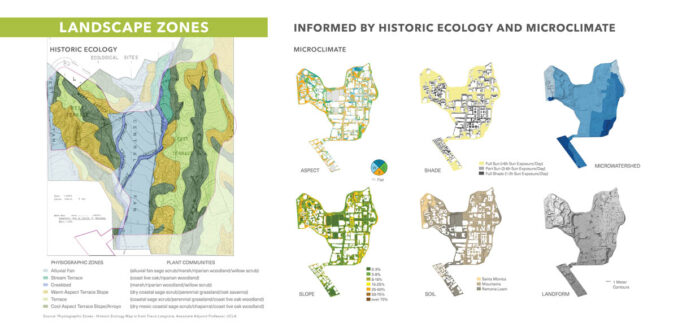
Environmental Systems: The Plan reveals the campus landscape’s potential for biodiversity enhancement through a campus-wide network of high-quality habitat patches and corridors. It targets 30% of the total campus land designated for biodiversity enhancement, broadening Los Angeles County’s region-wide biodiversity enhancement effort.
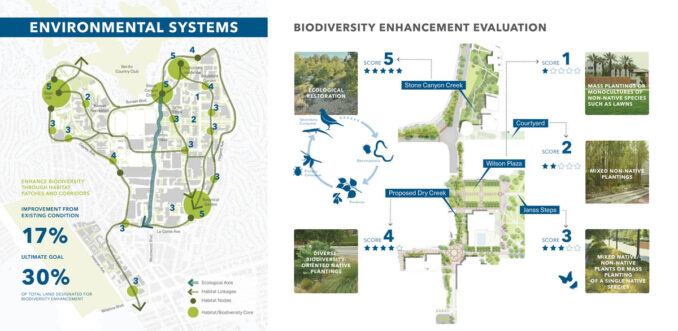
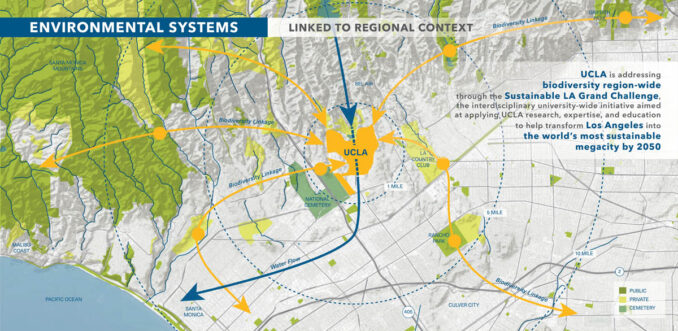
Design and Programming: The Plan makes systematic design and programming recommendations through the development of a place type framework. Specific strategies are presented through conceptual design and programming of selected key areas, which establish a basis of design for future implementation.
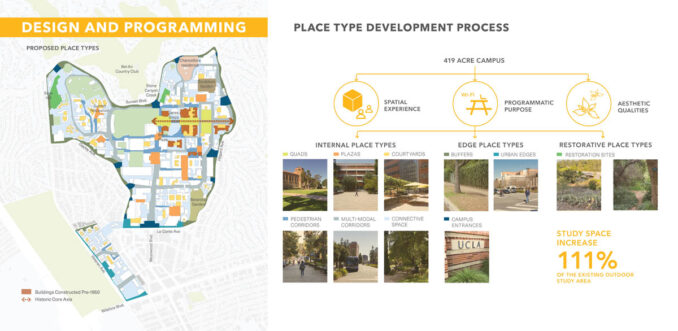
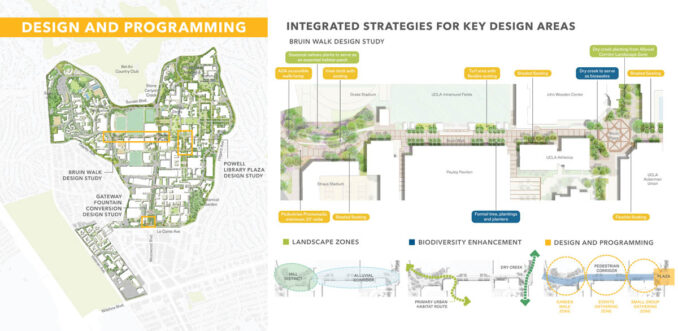
Phasing and Total Asset Management
The Plan provided short-term and long-term implementation strategies and laid out next steps which address multiple audiences. The team introduced the concept of total asset management to measure the value of the current and future landscapes, guiding the University to manage landscape improvements under an actionable schedule and with coordinated funding resources.
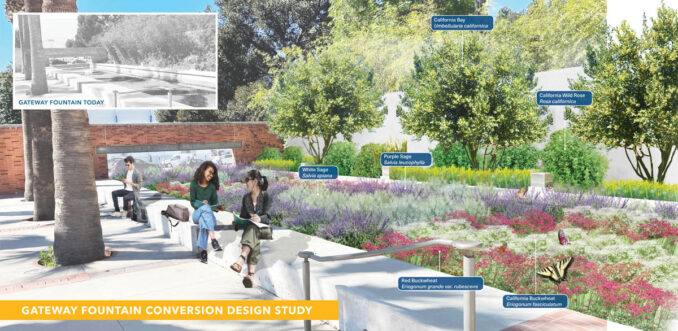
The Resilient Campus Historic Ecology and Water Conservation at UCLA
Location: Los Angeles, California, USA
Designer: Design Workshop, Inc.
Collaborators: Stillwater Sciences, Carol Bornstein, JTL Consultants
Image Credits: UCLA and Design Workshop

